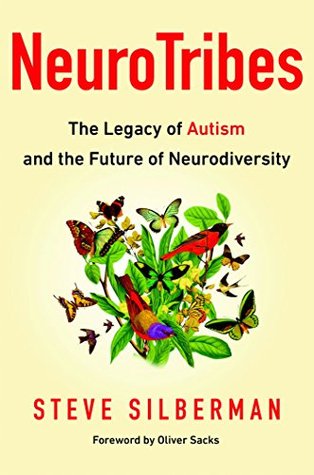More on this book
Community
Kindle Notes & Highlights
Ironically, while Raymond was widely referred to in the press as “high-functioning” and “one of the lucky ones” when the film came out, he was portrayed as less capable of living independently than any of the real-life models on which his character was based.
Morrow got his first glimpse of the phenomenon he had wrought by reading a letter from a mother shortly after the film opened. She explained that taking her son shopping was an ordeal because he almost inevitably had a meltdown, and other mothers would chastise her for having such an out-of-control child. Recently, however, when a woman skewered her with a withering look at the market, she asked her: “Did you see Rain Man?” “Oh yes,” the woman replied, “I loved that movie.” “Well, my son Johnnie is like Raymond Babbitt,” the mother said. The other woman’s face softened. “Oh, Johnnie,” she
...more
Soon other autistic characters began to infiltrate the popular imagination. Within months of Rain Man’s release, Ann Martin published Kristy and the Secret of Susan, the thirty-second installment of The Baby-Sitters Club, one of the biggest-selling series of young adult books in history. Susan’s “secret” was autism, and while she wasn’t much of a character—doing little to advance the plot but flap her hands and make life difficult for her mother—the book was notable for portraying autism in terms that even a twelve-year-old could understand.
while Spitzer’s eccentricities may have fallen short of meeting the criteria for Asperger’s syndrome, the DSM-III was the product of a mind that exhibited many classic qualities of autistic intelligence. These traits enabled Spitzer to get the job done with a minimum of fretting about offending various sectors of the profession. Calling him an “idiot savant of diagnosis,” Spitzer’s colleague Allen Frances, who went on to chair the task force that created the DSM-IV, observed, “He doesn’t understand people’s emotions. He knows he doesn’t. But that’s actually helpful in labeling symptoms. It
...more
For the mature Temple Grandins of the world, the only diagnosis on offer was “Infantile Autism, Residual State”—an awkward kluge invented to describe people who met the criteria for the full syndrome in infancy and still manifested “oddities of communication and social awkwardness.”
One thing that is immediately obvious is that the new criteria could be applied to a much larger and more diverse population than the criteria in the DSM-III. A nonspeaking boy of six who rocked in a corner all day would fill the bill, as would a woman in her late twenties who reflexively averted her eyes when speaking and calmed herself by knitting while inwardly fancying herself the real-life equivalent of Sarah Jane Smith on Doctor Who.
“I am incredibly disciplined in the diagnostic classifications in my research, but in my private practice, I’ll call a kid a zebra if it will get him the educational services I think he needs.”
all. “Fifty percent of the autistic population are mute and remain that way all of their lives,” one author declared in a 1994 anthology for professionals called Autism in Children and Adults. “Even high-IQ autistic adolescents sustain only rudimentary social relationships and seem to retain the characteristic lack of empathy and the shallow affect,” another author claimed. The clinical definition of autism was mutating, ramifying, spreading out into a rainbow of a million colors. But the outlook on the lives and potential of autistic people remained relentlessly monochrome.
Was Asperger’s syndrome truly a mental disorder or a common personality type in its most extreme form? Asperger’s 1944 description suggested a more holistic view: it was a personality type that could become profoundly disabling in the absence of adequate adaptation by the patient and the people in his or her environment.
The B.’s were well aware that the protocols and conventions of nonautistic society were opaque to them, and that they were required to “ape human behavior” at work, as Mr. B. put it, to avoid alarming their professional colleagues. But Sacks reported that they had come to feel that their autism, “while it may be seen as a medical condition, and pathologized as a syndrome, must also be seen as a whole mode of being, a deeply different mode or identity, one that needs to be conscious (and proud) of itself.”
Grieve if you must, for your own lost dreams. But don’t mourn for us. We are alive. We are real. And we’re here waiting for you.”
Some read books in the sun while others played musical instruments. Some strode briskly along the paths while others walked beside service animals or navigated in wheelchairs. Some talked loudly, flapping their hands, as others tapped silently on letterboards. Of necessity, autistic space was tolerant of a wide range of behavior, because autistics are even more different from one another than they are from NTs. Each person who came to Autreat had their own unique set of abilities and intense interests, which they had been pursuing for years in solitude with monastic devotion.
A new idea was brewing at events like Autreat and in the myriad of autistic spaces taking root online. It turned out to be an idea as old as Asperger’s notion that people with the traits of his syndrome have always been part of the human community, standing apart, quietly making the world that mocks and shuns them a better place.
Young people on the spectrum flocked to online communities like Wrong Planet to announce their diagnoses as cause for celebration rather than as occasions for mourning, because their lives had at last come into focus. It remained to be seen, however, whether a bunch of brainy kids tapping away at their keyboards could evolve into a social force formidable enough to oppose the rhetoric of disease and disorder that had intensified after the publication of Wakefield’s study. Could an aggregation of loners become a movement?


